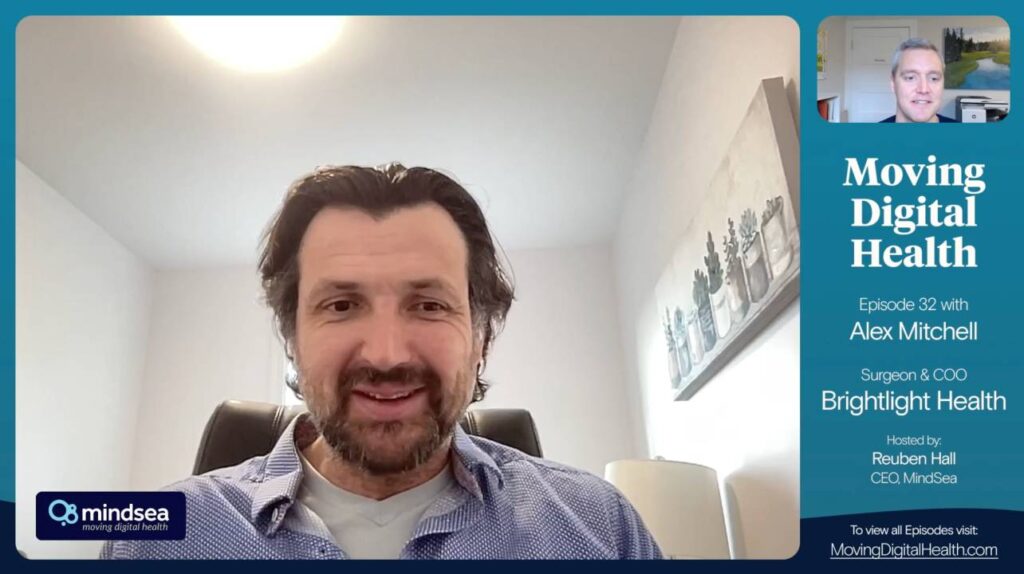Here’s the reality when it comes to iOS app development in 2019:
There’s a whole lotta fake news.
When it comes to developing and designing iOS apps, it seems like there’s a brand-new myth waiting around every corner. Whether you’re reading blog posts, watching videos, or just scrolling through your Facebook feed, you’re bound to come across at least one clichéd belief about what it takes to build an iPhone app.
Maybe it’s the language you need to use to build it.
Maybe it’s the Apple tools you should or shouldn’t be starting with.
Maybe it’s the way you have to approach the app-building process in general.
The bottom line is this: We’re in the digital era, and you’ll find myths about the app development process everywhere you look. And that leaves us with one very important question…
What are the biggest iOS app development myths that need to be exposed once and for all?
We posed the question to some highly talented iOS experts to get their take on the BS surrounding iPhone apps and ask for their advice on what you should really be focusing on when building an iOS app.
According to our experts, here are the 7 biggest myths about building an iOS app, plus key takeaways you can rely on as you create your own app:
Myth 1: The more complex the code, the better the app.
When we asked Olivier Collet, native app builder at Unsplash, to name the biggest iOS app development myth, he said:
“I think a lot of developers underestimate the tools and frameworks offered by Apple, and waste too much time overthinking app architectures and new concepts. I have seen too many over-engineered apps, and read too many articles that bring more complexity than simplicity.”
Here’s the key takeaway:
You don’t need to reinvent the wheel.
When building an iOS app, don’t be afraid to use the frameworks Apple offers. They’ve been created and fine-tuned by experienced iOS developers with a ton of knowledge about what works and what doesn’t.
Far too often, iPhone app developers label Apple’s frameworks as too simple and instead try to build something from scratch. The typical result is an app that takes much longer to build and is more complex than it needs to be. Embrace the simplicity.
READ ON: The Ultimate Guide To Understanding UX Design For Mobile Apps
Myth 2: The technology is the most challenging part.
Here’s what Andy Matuschak, early product development lead at Khan Academy, says is the most prominent app-building myth:
“The most important myth about apps is that the important, challenging part of their creation is technological. It’s understanding authentic human needs, in context, and tracing an overlap between those needs and what technology might facilitate. Programming is the easy part.”
For an experienced developer, writing the code and programming the app itself isn’t likely to be a major challenge. The real challenge is this:
You need to understand what your users are looking for, and how you can deliver an app experience that matches their wants and needs.
The user must come first as you begin to structure your iPhone app. Ask yourself what problem you’re trying to solve, what would motivate someone to download your app, and how you can ensure that what you build is something people will be interested in using.
Myth 3: You can only write clean code in certain architectures.
Chris Eidhof, co-founder and author at objc.io, told us:
“We just finished writing our book App Architecture. My biggest takeaway from writing it is that you can write clean code in any architecture (also MVC), as long as you’re aware of the limitations.”
There’s a common belief that you can only create certain types of iOS apps using certain types of app architectures, and that trying to build an app with a different architecture will result in messy code and a poor user experience.
The truth is, you can build a clean iPhone app using any architecture as long as you’re aware of its limitations.
Before diving headfirst into a different app architecture for your iOS app, do your research on the limitations of that architecture so you can ensure your code is clean throughout. If you don’t know the limitations beforehand, you may find yourself working backwards to patch up and fix past work, creating unnecessary headaches and a less-than-ideal user experience.
Myth 4: You should always live within Apple’s constraints.
We already debunked the myth that developers have to think outside of Apple’s frameworks. But according to Orta Therox, designer and engineer at Artsy, too many developers are only thinking inside the box:
“Most people just assume Apple knows best when making an app, and opt to always copy Apple strategies and live within their constraints. That’s not always the right way to think about a problem of building an app—because Apple has very different needs than you.”
Don’t be afraid to embrace your inner creative and take Apple’s pre-existing frameworks to new heights.
Although Apple’s frameworks are a great place to start, your iPhone app is (hopefully) solving a unique problem that whoever built Apple’s frameworks may not have considered. Take the specialized knowledge you have about said problem and build an iOS app that’s best suited to offer a solution, regardless of what frameworks Apple is offering.
Myth 5: You need to use Swift to have a successful app.
When we asked Peter Steinberger, founder and CEO at PSPDFKit, for his take on app development myths, he kept it short and sweet:
“That you need to use Swift to have a successful app.”
Swift is a programming language Apple created for building iOS apps across all iOS devices. It’s open source and easy to use, so that anyone who wants to build an iOS app has a go-to programming language to create it with.
While Swift is great, there’s a common belief in the iOS development world that Swift is the one and only language you can use to build a high-quality app.
The truth is, you don’t NEED to use Swift at all.
If you’d rather build your iOS app in a different programming language, that doesn’t automatically mean it’s going to be messy, offer a poor user experience, and be a complete flop.
Myth 6: An iOS developer can only build iOS apps.
Ash Furrow, senior mobile engineer at Artsy, says developers unnecessarily box themselves in:
“The labels we apply to software developers aren’t as helpful as we think they are … I called myself an ‘iOS developer’ for a long time. Eventually, I faced a problem that required me to write a server. I dreaded it, but writing server code turned out to be no harder than writing iOS apps. At that moment, I realized that I wasn’t really an ‘iOS developer,’ I was just a ‘developer.’ Since then, I’ve rejected the label entirely.”
Even if you specialize in (or have only worked in) iOS app development, don’t let yourself get stuck in the “I’m an iOS developer” box.
You can use those problem-solving skills to build all sorts of apps and systems that solve unique problems, whether those apps and systems be iOS apps or something else.
And if you’re looking to build out your developer team, it’s important to recognize that iOS developers can do much more than just build iPhone apps.
Myth 7: You should accept every app development offer you receive.
Oliver Drobnik, author and iOS expert at Cocoanetics, took a different approach to the question, and focused on the journey from new developer to iOS expert. His key takeaway for anyone new to the iOS development world is this:
“Don’t ask for too little money for your time. Don’t be afraid to move on if you feel that the reward does not match your efforts.”
If the offer doesn’t match the time and energy that would be required to build a successful app, don’t be afraid to negotiate or decline the offer.
As you’re looking to build your experience and establish yourself as a credible player in the iOS app development industry, don’t think you need to say yes to every job that comes your way. If you’re consistently delivering high-quality iOS apps, your credibility will rise and the offers coming your way will align with the work you’re producing.
Wrapping It Up
There’s a lot of noise out there when it comes to finding the perfect formula for a successful iPhone app. The reality is, there’s no such thing as one perfect formula that’s guaranteed to work every time. The way you approach the creation of your iPhone app will depend on what problem you’re trying to solve and what makes your solution unique.
Here’s a quick recap of the top 7 myths about building iOS apps:
- The more complex the code, the better the app.
- The technology is the most challenging part.
- You can only write clean code in certain architectures.
- You should always live within Apple’s constraints.
- You need to use Swift to have a successful app.
- An iOS developer can only build iOS apps.
- You should accept every app development offer you receive.
If you’re ready to invest in mobile and want to build an iOS app of your own, we’d love to chat with you about it. Get in touch with a MindSea Product Strategist today and we’ll help you get the ball rolling.



